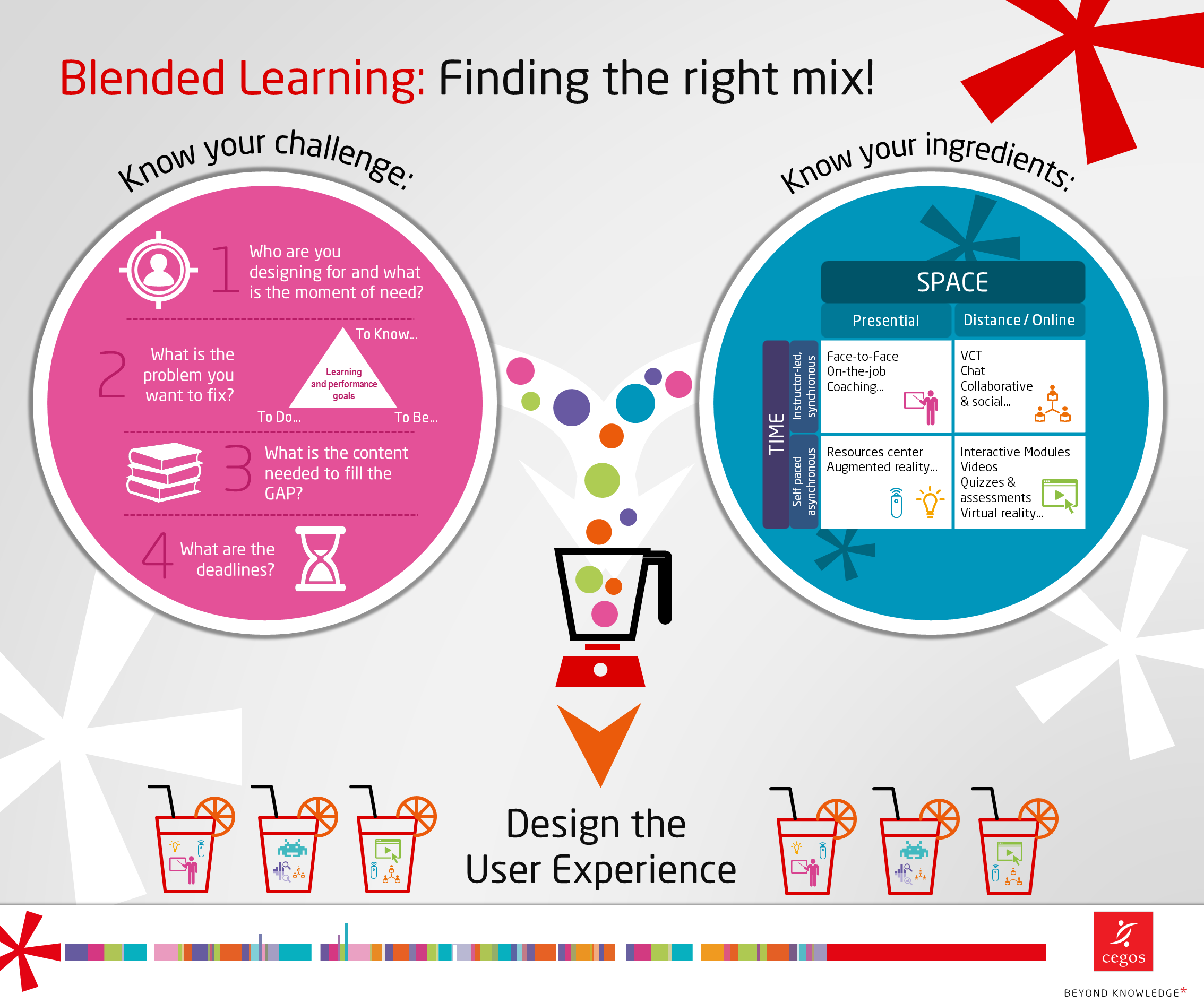 Blended learning can come in all shapes and sizes and is not easy to get right. In fact, many learning professionals still tell us that it can seem within their grasp, yet just out of reach. Why? Mainly it is around concept versus reality. Conceptually we know and can accept what blended learning is and what it can do. The reality is that it can be hard to put together, hard to engage the needed stakeholders into it and hard to get off the ground.As a learning company, we have developed our approach based on two key principles – and that helps us engage our clients and their learners and drive the most suited blended content, to execute behind the learning goals and outcomes most desired. The graphic below highlights this 2-pronged high level approach, helping us to design the optimal organizational and learner experience
Blended learning can come in all shapes and sizes and is not easy to get right. In fact, many learning professionals still tell us that it can seem within their grasp, yet just out of reach. Why? Mainly it is around concept versus reality. Conceptually we know and can accept what blended learning is and what it can do. The reality is that it can be hard to put together, hard to engage the needed stakeholders into it and hard to get off the ground.As a learning company, we have developed our approach based on two key principles – and that helps us engage our clients and their learners and drive the most suited blended content, to execute behind the learning goals and outcomes most desired. The graphic below highlights this 2-pronged high level approach, helping us to design the optimal organizational and learner experience Let me explain the key components...
Let me explain the key components...1) Know your challenge
Answer the 4 key questions and you will have established your learning goal and desired outcomes. This will also help establish the ideal mix required in terms of knowledge improvement inputs, up-skilling activities and behavioural elements required to achieve the optimum result (solving a problem, improving performance or closing a gap etc). Crucial to this is the “Training Triangle”:a) To know – what is the knowledge gap and how big a gap is it?
b) To Do – what is the relative capability of our managers and teams to do what is required to perform with max impact? Ie what skills do we need to optimize?
c) To Be - what (new) behaviors do we value / do we need to see as an outcome of the learning intervention?
2) Know your key ingredients for success
-If we get the Training Triangle correct in terms of understanding the key learning challenge / outcome desired, we can also better define the correct mix of content and training delivery vehicle we need in our blend (ie % face to face, % online, % informal self-driven etc). This in turn can inform the most suited mix within our Space / Time continuum!Space being the learning spaces within which the learning takes place - be they physical, onine or virtual. Time being the shorter and longer learning bursts delivered in multiple formats, whether synchronous or asynchronousOnce we understand the most suited ingredients for our approach we can define the final blend of the optimized learning interventions, focused on the learning goal / challenge to solve, mixing self-paced learning with formalised group training, peer sharing, on the job coaching and more.Crucially if we get this mix of goal oriented outcomes and appropriate learning interventions right we not only extend the learning, we maximize the learning efficiency for the organization and for the learners themselves – engaging stakeholders like Line Managers as an integrated part of the blended learning track, as well as passing ownership for completing and engaging with the learning, to the learners themselves.You can read more about our approach to blended learning here

